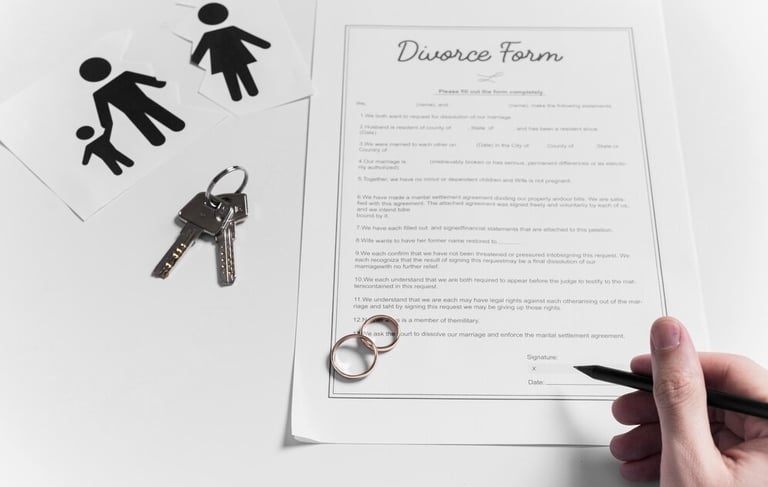How to File for Divorce in Alberta: A Step-by-Step Guide
Filing for divorce is a significant life decision, and understanding the legal process in Alberta can help you navigate it more smoothly. At Stem Law Office, we are here to guide you through each step, ensuring that your rights are protected and that the process is as straightforward as possible.


Before you can file for divorce in Alberta, you need to meet certain criteria:
1. Determine Eligibility
Residency: Either you or your spouse must have lived in Alberta for at least one year before filing.
Grounds for Divorce: Canada recognizes three grounds for divorce: separation for at least one year, adultery, or cruelty.
2. Separation Period


Most divorces in Alberta are granted on the basis of separation. You and your spouse must be living separate and apart for at least one year. It is possible to live in the same home during this period, as long as you can prove that you were living separate lives.
3. Gather Necessary Documents
To begin the process, you'll need several important documents:
Marriage Certificate: You must provide a copy of your marriage certificate. If you were married outside of Canada, it must be translated into English or French.
Statement of Claim for Divorce: This document outlines your request for divorce and any additional claims such as child support, spousal support, or division of property.
Additional Documents: Depending on your circumstances, you may also need financial statements, affidavits, and parenting plans.


4. File the Statement of Claim
You can file your divorce papers at the Court of King's Bench in Alberta. The Statement of Claim must be filed in the judicial district where either you or your spouse resides. After filing, the court will issue a "Notice to Respondent" (your spouse) along with a copy of the Statement of Claim.
5. Serve the Documents
Once the court has processed your filing, you must serve the divorce papers to your spouse. This must be done within six months of filing, and it can be done personally or through a process server. If your spouse is difficult to locate, you may need to apply to the court for permission to serve by an alternative method.


6. Response from the Spouse
Your spouse has 20 days (if in Alberta), 30 days (elsewhere in Canada), or 60 days (outside Canada) to respond to the divorce claim. They can choose to:
Agree with the terms of the divorce.
Disagree and file a Statement of Defence, leading to further legal proceedings.
Ignore the claim, in which case you may proceed with an uncontested divorce.
7. Uncontested vs. Contested Divorce
Uncontested Divorce: If your spouse agrees with the terms or fails to respond, the divorce is uncontested. You can proceed to apply for a Divorce Judgment.
Contested Divorce: If your spouse disputes the claim, the divorce is contested, and the court will schedule a case conference or trial to resolve the issues. Many issues can be resolved through mediation or alternative dispute resolution.
8. Finalizing the Divorce
For an uncontested divorce, you can apply for a Divorce Judgment. Once granted, there is a 31-day waiting period before the Divorce Certificate is issued, making the divorce official.
Divorce can be complex, especially when children, property, or significant assets are involved. Consulting with a lawyer ensures that your rights are protected and that you fully understand the implications of the legal proceedings. At Stem Law Office, we provide comprehensive legal support throughout the divorce process. Contact us today to schedule a consultation and take the first step towards resolving your family law matters with confidence.
Flexible WEEKEND AND EVENING APPOINTMENTS AVAILABLE
Email: info@stemlaw.ca
TEL: 825-967-9007
© 2024. All rights reserved.
FAX: 587-838-2100


STEM LAW OFFICE
Address: 9360 - 34 Avenue
Edmonton, AB T6E 5T5
